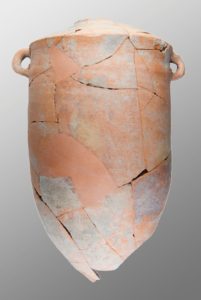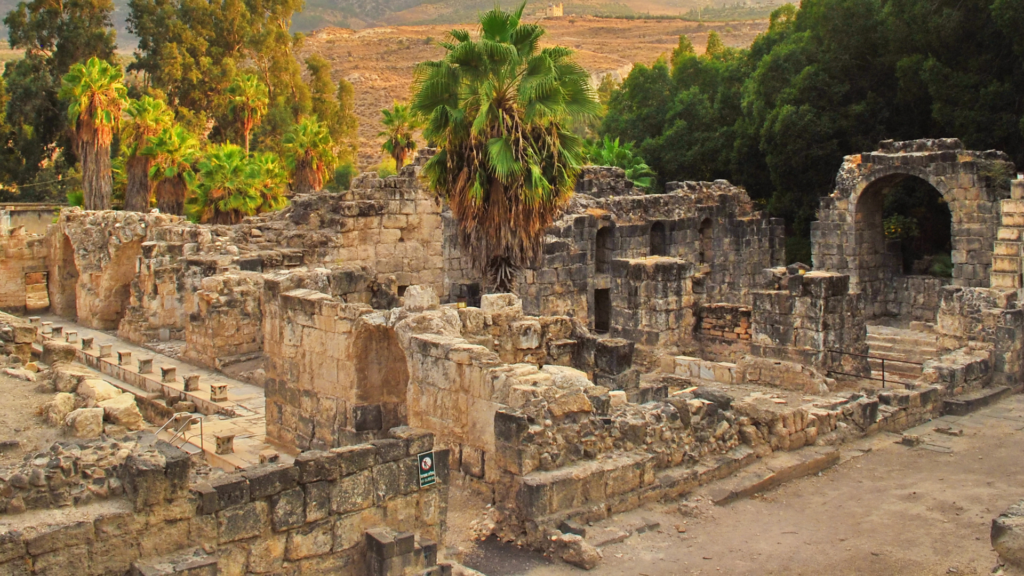
2,500-year-old Persian Military Base Found in Israel
2,500-year-old Persian Military Base Found in Israel
December 27, 2018
Haaretz Magazine – Around 2,500 years ago, the Persian king Cambyses II mounted an all-out assault on Egypt, basing the campaign in Palestine. Now archaeologists believe they may have found a camp in northern Israel from which the Achaemenid emperor launched his invasion of the Nile Kingdom.

Prof. Gunnar Lehmann
The excavations at Tel Keisan are being led by BGU Prof. Gunnar Lehmann and Prof. David Schloen from the Oriental Institute of the University of Chicago. In the two seasons of excavations, in 2016 and 2018, the archaeologists exposed levels dating to the Hellenistic period (3rd and 2nd century B.C.E.), the Persian period (5th-4th centuries B.C.E.) and the Iron Age (7th century B.C.E.). The archaeologists have also found earlier levels, dating to the Late Iron Age around 3,000 years old, but these have yet to be thoroughly explored.
The Achaemenid Empire had been founded by Cyrus the Great in the 580s B.C.E., overcoming the Median, Lydian and Neo-Babylonian empires as it expanded. Cambyses II was his son and he pursued his father’s dream of regional rule.
Among the findings at Tel Keisan, a hill rising 28 meters from the coastal plain near the city of Acre (aka Akko) in northern Israel, were ruins dated to the Persian period by ceramic jars and cooking pots in Greek and Phoenician styles typical of that time.
The Phoenicians on the Palestine coast and their fleet had been subjugated by the Assyrians and then by the Persians; and the ancient Greek historian Herodotus said that Greek mercenaries fought in the Persian emperor Cambyses’ army. The Greek and Phoenician ceramic finds in the Persian layer of Tel Keisan suggest that this area was part of the base camp of the great Achaemenid campaign.
“Under Cambyses, the Persians wanted to prepare for war with and conquest of Egypt. They did that in Palestine,” says Prof. Lehmann from BGU’s Department of Bible, Archaeology and Ancient Near East.
It was on the Acre plain that Cambyses assembled his army that would sweep down to Egypt, in the 520s B.C.E.
Tell Keisan means “hill of treachery” in Arabic, though why it got that name is no longer known. Mentioned from the 12th century onward by Arabic chroniclers, it presumably refers to an embarrassing military event now forgotten. Nor is the settlement’s name in antiquity known.
Keisan sits on a hill rising 28 meters above the ground in the heart of the Acre plain. The site, which has been occupied for at least 6,000 years, is strategically positioned, overlooking the approach to the fertile Plain of Jezreel (Esdraelon), as well as commercial trade routes between the Galilee, the Jordan Valley, and the east.
Previous surveys and excavations have exposed massive systems of fortifications from the Iron Age, around 1,000 to 587 B.C.E., on the Acre plain.
Based on the discoveries in the archaeological layers, it seems that the serial conquerors of Palestine found the settlement’s strategic location irresistible: the locals, the Egyptians, the Assyrians, and the Persians under Cambyses II, who seem to have used it as their administrative center and military base of operations in the 5th century B.C.E., and later as well.
Regarding the Egyptians, Keisan was one of several strongholds along the Acre coastal plain when they controlled Palestine, from around 637 to 605 B.C.E., says Prof. Lehmann. Two others were Achziv and Tel Kabri, and there may have been more.
At Keisan itself, right below the Persian level, the archaeologists exposed a large building with storage rooms dating to the earlier Egyptian empire of the 26th Dynasty. The building apparently began its career in the 7th century B.C.E. and seems to have served as a governmental or administrative building, which among other things provided food for its personnel.
The building also contained Phoenician, Cypriot and East Greek pottery, but of an earlier type, typical of that pre-Persian time. The storage rooms contained numerous complete storage jars, mostly of Phoenician origin, and Cypriot “basket-handle” amphoras typical of the 7th century B.C.E. Among the people using the facility may have been mercenaries serving under Egyptian command.
Why were the Persians so adamant about conquering Egypt, aside from the usual human weakness for building empires?
One reason is because the various empires in the Levant and Middle East considered Egypt to be a major threat. That is just one more reason for their desire to control Palestine – a fertile land with a long coast, and a convenient origin for attacks on Egypt. Or, at least, to contain Egypt’s influence over the Levant.
So not only were the Mediterranean plains fertile, with plenty of space and grasses for horses: it was close to Egypt and was relatively safe ground for Cambyses to slowly prepare for his invasion, Prof. Lehmann sums up.
The forces Cambyses massed on the coast would have needed a huge apparatus and an incredible amount of resources. Tel Keisan would have been only one of a series of supply points along the Acre plain, indeed the archaeologists found remnants of storage jars and cooking pots in large quantities that may have been used Cambyses’ armies. A key bit of evidence was a large pit with organic debris and substantial quantities of pottery, some of which was Phoenician pottery some imports from Greece, mainly from Athens.
Sadly, the architecture of the Persian period at Tel Keisan was severely damaged when the armies of the Hellenistic ruler, Alexander the Great, ravaged the land as they drove out the Persians (under King Darius) in the second half of the 4th century B.C.E.




